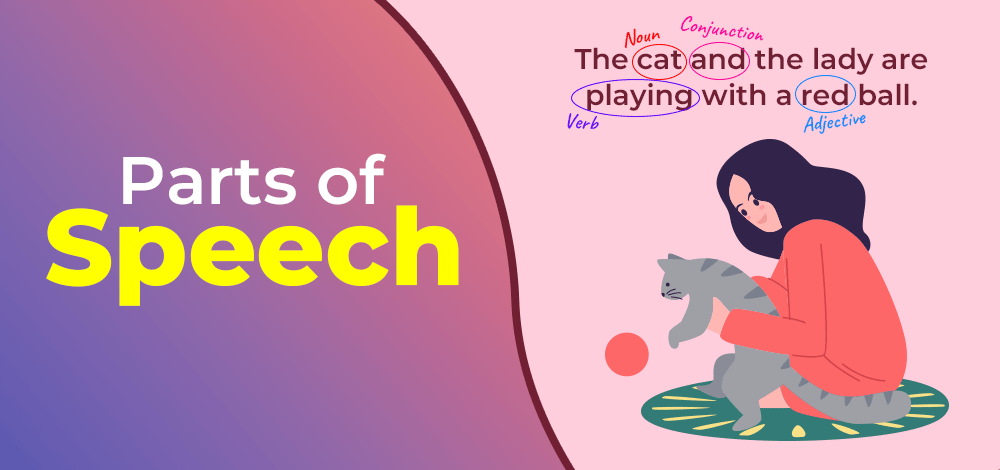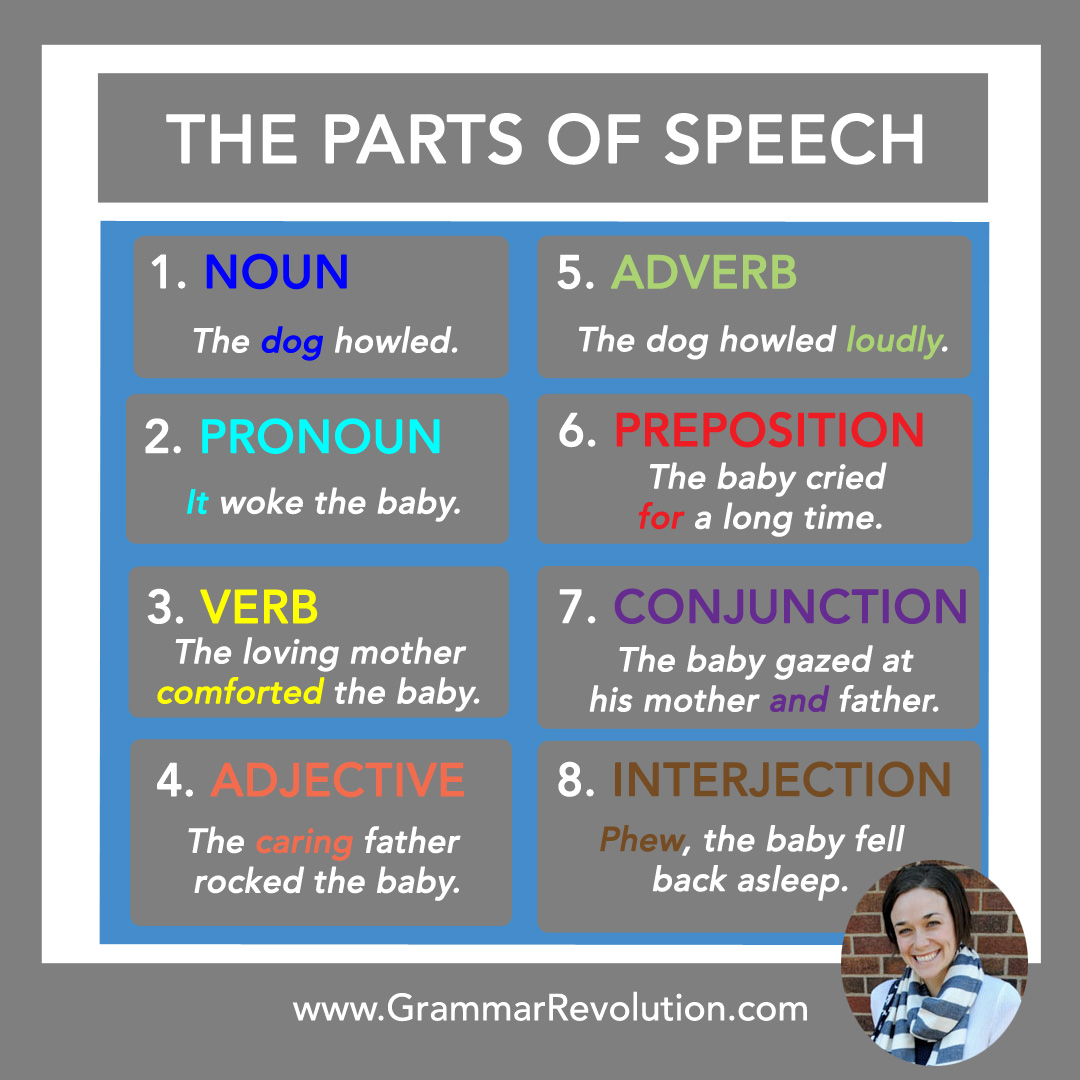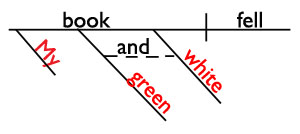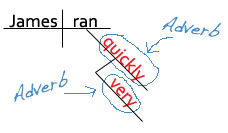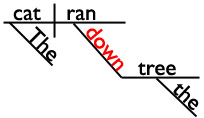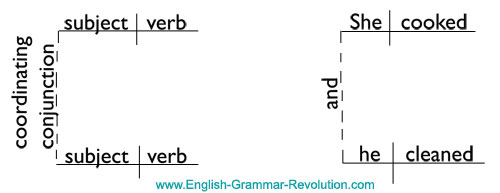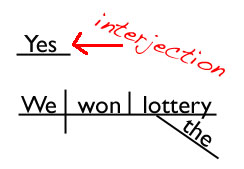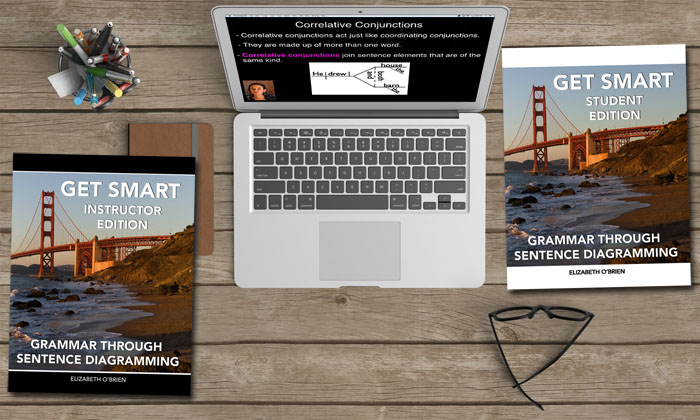Parts of Speech
Every word is a part of speech, each playing a specific role in a sentence. There are 8 different parts of speech including noun, verb, adjective, adverb, pronoun, preposition, conjunction, and interjection. Each word in a sentence plays a vital role in conveying the meaning and intent of the sentence.
What is Part of Speech?
The English language has thousands of words and every word has some function to perform. Some words are there to show action, some to join, and some to name something. And together, all the functions performed by words in the English language fall under Parts of speech.
Parts of Speech Definition
The parts of speech are the “traditional grammatical categories to which words are assigned in accordance with their syntactic functions, such as noun, verb, adjective, adverb, and so on.” In other words, they refer to the different roles that words can play in a sentence and how they relate to one another based on grammar and syntax.
Parts of Speech Table
| Types | Function | Examples | Sentences |
| Noun | Refers Things or person | Pen, Chair, Ram, Honesty |
Cars are expensive. This chair is of wood. Ram is a topper. Honesty is the best policy. |
| Pronoun | Replaces a noun | I, you, he, she, it, they |
They are expensive. It is of wood. He is a topper. It is the best policy |
| Adjective | Describes a noun |
Super, Red, Our, Big, Great class |
Super cars are expensive Red chair is for kids Ram is a class topper. Great things take time. |
| Verb | Describes action or state | Play, be, work, love, like |
I play football I will be a doctor I like to work I love writing poem. |
| Adverb | Describes a verb, adjective or adverb | Silently, too, very |
I love reading silently. It is too tough to handle. He can speak very fast. |
| Preposition | Links a noun to another word | at, in, of, after, under, |
The ball is under the table. I am at a restaurant. she is in trouble. I am going after her. It is so nice of him |
| Conjunction | Joins clauses and sentences | and, but, though, after |
First, I will go to college and then I may go to fest. I don’t have a car but I know how to drive. She failed the exam though she worked hard. He will come after he finish his match. |
| Interjection | Shows exclamation | oh!, wow!, alas! Hurray! |
Oh! I got fail again. Wow! I got the job. Alas! She is no more. Hurray! we are going to party. |
Parts of Speech Examples with Sentences
Noun
Examples: Luggage, Cattle.
Sentence: Never leave your luggage unattended.
In some places, cattle are fed barely.
Pronoun
Examples: who, either, themselves
Sentence: I know a man who plays the guitar very well.
Either of the two cars is for sale.
They enjoyed themselves at the party.
Adjective
Examples: kind, moving, wounder.
Sentence:
She is a kind person.
Boarding a moving bus can be dangerous.
Never poke a wounded animal.
Verb
Examples: Praise, Hate, Punish
Sentence: She always praises her friends.
I don’t hate anybody.
The boy has been punished by his teacher
Adverb
Examples: Always, enough, immediately
Sentence: we should always help each other.
We should be wise enough to understand what is good for us.
We should leave bad habits immediately.
Preposition
Examples: Off, Below, From. to
Sentence:
He plunged off the cliff
I live below the 9th floor.
I travel daily from Delhi to Noida.
Conjunction
Examples: whereas, as well as, so,
Sentence: The new software is fairly simple whereas the old one was a bit complicated.
The finance company is not performing well as well as some of its competitors.
He was ready so he may come.
Interjection
Examples: oops! whoa! phew!
Sentence: Oops! I forgot to mention her name.
Whoa! you drive fast.
Phew! That was close call, we had a narrow escape.
Parts of Speech Quiz
Choose the correct Parts of Speech of the BOLD word from the following questions.
1. Let us play, Shall We?
a. Conjunction
b. Pronoun
c. Verb
2. It is a good practice to arrange books on shelves.
a. Verb
b. Noun
c. Adjective
3. Whose books are these?
a. Pronoun
b. Preposition
c. verb
4. Father, please get me that toy.
a. Pronoun
b. Adverb
c. Adjective
5. His mentality is rather obnoxious.
a. Adverb
b. Adjective
c. Noun
6. He is the guy whose money got stolen.
a. Pronoun
b. Conjunction
c. Adjective
7. I will have finished my semester by the end of this year.
a. Interjection
b. Conjunction
c. Preposition
8. Bingo! That’s the one I have been looking for
a. Interjection
b. Conjunction
c. Preposition
Quiz Answers
1. c, 2. b, 3. a, 4. c, 5. a, 6. b, 7. c, 8. a
FAQs on Parts of Speech
Q1. What are Parts of Speech?
Ans. A word is assigned to a category as per its function, and those categories are together known as Parts of Speech.
Q2. What are the 8 Parts of Speech?
Ans. Noun, Pronoun, Adjective, Verb, Adverb, Preposition, Conjunction, Interjection.
Q3. How many Parts of Speech are there?
Ans. There are a total of 8 parts of Speech.
Q4. What Part of Speech is “our”?
Ans. Adjective. Eg. Our car.
Q5. What Part of Speech is “Quickly”?
Ans. Adverb. let us understand it with this example – Milk sours quickly in warm weather.
The Eight Parts of Speech
TIP Sheet
THE EIGHT PARTS OF SPEECH
There are eight parts of speech in the English language: noun, pronoun, verb, adjective, adverb, preposition, conjunction, and interjection. The part of speech indicates how the word functions in meaning as well as grammatically within the sentence. An individual word can function as more than one part of speech when used in different circumstances. Understanding parts of speech is essential for determining the correct definition of a word when using the dictionary.
1. NOUN
- A noun is the name of a person, place, thing, or idea.
man… Butte College… house… happiness
A noun is a word for a person, place, thing, or idea. Nouns are often used with an article (the, a, an), but not always. Proper nouns always start with a capital letter; common nouns do not. Nouns can be singular or plural, concrete or abstract. Nouns show possession by adding ‘s. Nouns can function in different roles within a sentence; for example, a noun can be a subject, direct object, indirect object, subject complement, or object of a preposition.
The young girl brought me a very long letter from the teacher, and then she quickly disappeared. Oh my!
See the TIP Sheet on «Nouns» for further information.
2. PRONOUN
- A pronoun is a word used in place of a noun.
She… we… they… it
A pronoun is a word used in place of a noun. A pronoun is usually substituted for a specific noun, which is called its antecedent. In the sentence above, the antecedent for the pronoun she is the girl. Pronouns are further defined by type: personal pronouns refer to specific persons or things; possessive pronouns indicate ownership; reflexive pronouns are used to emphasize another noun or pronoun; relative pronouns introduce a subordinate clause; and demonstrative pronouns identify, point to, or refer to nouns.
The young girl brought me a very long letter from the teacher, and then she quickly disappeared. Oh my!
See the TIP Sheet on «Pronouns» for further information.
3. VERB
- A verb expresses action or being.
jump… is… write… become
The verb in a sentence expresses action or being. There is a main verb and sometimes one or more helping verbs. («She can sing.» Sing is the main verb; can is the helping verb.) A verb must agree with its subject in number (both are singular or both are plural). Verbs also take different forms to express tense.
The young girl brought me a very long letter from the teacher, and then she quickly disappeared. Oh my!
See the TIP Sheet on «Verbs» for more information.
4. ADJECTIVE
- An adjective modifies or describes a noun or pronoun.
pretty… old… blue… smart
An adjective is a word used to modify or describe a noun or a pronoun. It usually answers the question of which one, what kind, or how many. (Articles [a, an, the] are usually classified as adjectives.)
The young girl brought me a very long letter from the teacher, and then she quickly disappeared. Oh my!
See the TIP Sheet on «Adjectives» for more information.
5. ADVERB
- An adverb modifies or describes a verb, an adjective, or another adverb.
gently… extremely… carefully… well
An adverb describes or modifies a verb, an adjective, or another adverb, but never a noun. It usually answers the questions of when, where, how, why, under what conditions, or to what degree. Adverbs often end in -ly.
The young girl brought me a very long letter from the teacher, and then she quickly disappeared. Oh my!
See the TIP Sheet on «Adverbs» for more information.
6. PREPOSITION
- A preposition is a word placed before a noun or pronoun to form a phrase modifying another word in the sentence.
by… with…. about… until
(by the tree, with our friends, about the book, until tomorrow)
A preposition is a word placed before a noun or pronoun to form a phrase modifying another word in the sentence. Therefore a preposition is always part of a prepositional phrase. The prepositional phrase almost always functions as an adjective or as an adverb. The following list includes the most common prepositions:
The young girl brought me a very long letter from the teacher, and then she quickly disappeared. Oh my!
See the TIP Sheet on «Prepositions» for more information.
7. CONJUNCTION
- A conjunction joins words, phrases, or clauses.
and… but… or… while… because
A conjunction joins words, phrases, or clauses, and indicates the relationship between the elements joined. Coordinating conjunctions connect grammatically equal elements: and, but, or, nor, for, so, yet. Subordinating conjunctions connect clauses that are not equal: because, although, while, since, etc. There are other types of conjunctions as well.
The young girl brought me a very long letter from the teacher, and then she quickly disappeared. Oh my!
See the TIP Sheet on «Conjunctions» for more information.
8. INTERJECTION
- An interjection is a word used to express emotion.
Oh!… Wow!… Oops!
An interjection is a word used to express emotion. It is often followed by an exclamation point.
The young girl brought me a very long letter from the teacher, and then she quickly disappeared. Oh my!
See the TIP Sheet on «Interjections» for more information.
A part of speech is a term used in traditional grammar for one of the nine main categories into which words are classified according to their functions in sentences, such as nouns or verbs. Also known as word classes, these are the building blocks of grammar.
Parts of Speech
- Word types can be divided into nine parts of speech:
- nouns
- pronouns
- verbs
- adjectives
- adverbs
- prepositions
- conjunctions
- articles/determiners
- interjections
- Some words can be considered more than one part of speech, depending on context and usage.
- Interjections can form complete sentences on their own.
Every sentence you write or speak in English includes words that fall into some of the nine parts of speech. These include nouns, pronouns, verbs, adjectives, adverbs, prepositions, conjunctions, articles/determiners, and interjections. (Some sources include only eight parts of speech and leave interjections in their own category.)
Learning the names of the parts of speech probably won’t make you witty, healthy, wealthy, or wise. In fact, learning just the names of the parts of speech won’t even make you a better writer. However, you will gain a basic understanding of sentence structure and the English language by familiarizing yourself with these labels.
Open and Closed Word Classes
The parts of speech are commonly divided into open classes (nouns, verbs, adjectives, and adverbs) and closed classes (pronouns, prepositions, conjunctions, articles/determiners, and interjections). The idea is that open classes can be altered and added to as language develops and closed classes are pretty much set in stone. For example, new nouns are created every day, but conjunctions never change.
In contemporary linguistics, the label part of speech has generally been discarded in favor of the term word class or syntactic category. These terms make words easier to qualify objectively based on word construction rather than context. Within word classes, there is the lexical or open class and the function or closed class.
Read about each part of speech below and get started practicing identifying each.
Noun
Nouns are a person, place, thing, or idea. They can take on a myriad of roles in a sentence, from the subject of it all to the object of an action. They are capitalized when they’re the official name of something or someone, called proper nouns in these cases. Examples: pirate, Caribbean, ship, freedom, Captain Jack Sparrow.
Pronoun
Pronouns stand in for nouns in a sentence. They are more generic versions of nouns that refer only to people. Examples: I, you, he, she, it, ours, them, who, which, anybody, ourselves.
Verb
Verbs are action words that tell what happens in a sentence. They can also show a sentence subject’s state of being (is, was). Verbs change form based on tense (present, past) and count distinction (singular or plural). Examples: sing, dance, believes, seemed, finish, eat, drink, be, became
Adjective
Adjectives describe nouns and pronouns. They specify which one, how much, what kind, and more. Adjectives allow readers and listeners to use their senses to imagine something more clearly. Examples: hot, lazy, funny, unique, bright, beautiful, poor, smooth.
Adverb
Adverbs describe verbs, adjectives, and even other adverbs. They specify when, where, how, and why something happened and to what extent or how often. Examples: softly, lazily, often, only, hopefully, softly, sometimes.
Preposition
Prepositions show spacial, temporal, and role relations between a noun or pronoun and the other words in a sentence. They come at the start of a prepositional phrase, which contains a preposition and its object. Examples: up, over, against, by, for, into, close to, out of, apart from.
Conjunction
Conjunctions join words, phrases, and clauses in a sentence. There are coordinating, subordinating, and correlative conjunctions. Examples: and, but, or, so, yet, with.
Articles and Determiners
Articles and determiners function like adjectives by modifying nouns, but they are different than adjectives in that they are necessary for a sentence to have proper syntax. Articles and determiners specify and identify nouns, and there are indefinite and definite articles. Examples: articles: a, an, the; determiners: these, that, those, enough, much, few, which, what.
Some traditional grammars have treated articles as a distinct part of speech. Modern grammars, however, more often include articles in the category of determiners, which identify or quantify a noun. Even though they modify nouns like adjectives, articles are different in that they are essential to the proper syntax of a sentence, just as determiners are necessary to convey the meaning of a sentence, while adjectives are optional.
Interjection
Interjections are expressions that can stand on their own or be contained within sentences. These words and phrases often carry strong emotions and convey reactions. Examples: ah, whoops, ouch, yabba dabba do!
How to Determine the Part of Speech
Only interjections (Hooray!) have a habit of standing alone; every other part of speech must be contained within a sentence and some are even required in sentences (nouns and verbs). Other parts of speech come in many varieties and may appear just about anywhere in a sentence.
To know for sure what part of speech a word falls into, look not only at the word itself but also at its meaning, position, and use in a sentence.
For example, in the first sentence below, work functions as a noun; in the second sentence, a verb; and in the third sentence, an adjective:
- Bosco showed up for work two hours late.
- The noun work is the thing Bosco shows up for.
- He will have to work until midnight.
- The verb work is the action he must perform.
- His work permit expires next month.
- The attributive noun [or converted adjective] work modifies the noun permit.
Learning the names and uses of the basic parts of speech is just one way to understand how sentences are constructed.
Dissecting Basic Sentences
To form a basic complete sentence, you only need two elements: a noun (or pronoun standing in for a noun) and a verb. The noun acts as a subject and the verb, by telling what action the subject is taking, acts as the predicate.
- Birds fly.
In the short sentence above, birds is the noun and fly is the verb. The sentence makes sense and gets the point across.
You can have a sentence with just one word without breaking any sentence formation rules. The short sentence below is complete because it’s a command to an understood «you».
- Go!
Here, the pronoun, standing in for a noun, is implied and acts as the subject. The sentence is really saying, «(You) go!»
Constructing More Complex Sentences
Use more parts of speech to add additional information about what’s happening in a sentence to make it more complex. Take the first sentence from above, for example, and incorporate more information about how and why birds fly.
- Birds fly when migrating before winter.
Birds and fly remain the noun and the verb, but now there is more description.
When is an adverb that modifies the verb fly. The word before is a little tricky because it can be either a conjunction, preposition, or adverb depending on the context. In this case, it’s a preposition because it’s followed by a noun. This preposition begins an adverbial phrase of time (before winter) that answers the question of when the birds migrate. Before is not a conjunction because it does not connect two clauses.
Today’s the day for you to learn about this important grammatical concept! But first…let’s see what the parts of speech have to do with your clothes.
Imagine that it’s laundry day, and you’ve just finished washing and drying your clothes. You dump the contents of the laundry basket onto your bed, and you begin to organize everything. You fold matching socks together, you create a pile of perfectly folded shirts that you would be proud to show Marie Kondo, and you do the same thing with your pants, jackets, and everything else.
In the same way that we organize our clothes into groups based on each item’s function and features, we organize our words into categories based on each word’s function and features. We call these categories of words the parts of speech.
Some people categorize words into eight parts of speech, and some people categorize them into nine parts of speech. Neither one is wrong; they’re just two ways of looking at things. We’ll go over these categories below. Here at English Grammar Revolution, we categorize words into eight groups, but I’ll tell you about the ninth one as well.
There’s one important thing for you to know before we look at these categories: most words can function as more than one part of speech. They will only do one job at a time, but they can do different things in different sentences. Look at the word love in the following sentences.
My love of grammar inspired me to make this website.
Here, love is functioning as a noun. It’s the subject of the sentence.
I love you.
Now, love is acting as a verb! It’s telling us an action.
The only way we can know how to categorize a word is to look at how it’s acting within a sentence.
Okay, let’s check out the parts of speech!
1. Nouns
Nouns name people, places, things, or ideas. They’re important parts of our sentences because they perform important jobs (subjects, direct objects, predicate nouns, etc.).
A peacock walked through our yard.
The dog howled during the night, and it woke up our whole family.
Sometimes people get bogged down with this part of speech because there are also many subcategories of nouns. This is similar to the way that we have subcategories for our clothes. You may have a whole drawer full of pants, but you may also have different types of pants that you use for different purposes (workout pants, lounge pants, work pants, etc.). This is similar to the way that we can further categorize nouns into smaller groups.
Here are a few of the subcategories of nouns: proper nouns, common nouns, collective nouns, possessive nouns, and compound nouns.
Tip: Other parts of speech also have subcategories. If you’re studying this information for the first time, ignore the subcategories and focus on learning about each broader category.
2. Pronouns
Pronouns take the place of nouns. When most people hear the word pronoun, they think of words like I, we, me, he, she, and they. These are indeed all pronouns, but they’re a part of a subcategory called personal pronouns. Know that there are other kinds of pronouns out there as well. Here are some examples: myself, his, someone, and who.
Here are a few of the subcategories of pronouns: reflexive pronouns, indefinite pronouns, possessive pronouns, and relative pronouns.
When we walked across the bridge, we saw someone who knows you.
I will fix the dishwasher myself.
3. Verbs
Verbs show actions or states of being. They are integral elements of sentences.
The shuttle will fly into space.
The loving mother comforted and soothed the baby.
In the Montessori tradition of education, they use a large red circle or ball to symbolize a verb, and they often teach children to think of verbs as a sun providing the energy of a sentence. Isn’t that a lovely way to think of verbs?
I know that you’re getting tired of hearing about subcategories, but linking verbs, action verbs, and helping verbs are described on the verb page here.
Modal verbs are described on that link, and you can learn even more about action verbs and linking verbs from those links.
4. Adjectives
Adjectives describe, or modify, nouns and pronouns. I like to think of them as adding color to language. It would be hard to describe a beautiful sunset or the way a touching story makes us feel without using adjectives.
The wise, handsome owl had orange eyes.
The caring father rocked the baby.
One helpful strategy for learning about and identifying adjectives is to learn how they are diagrammed. Sentence diagrams are pictures of sentences that help us see how all of the words are grammatically related. Since adjectives modify nouns and pronouns, we diagram them on slanted lines under the nouns/pronouns that they are modifying.
My green and white book fell.
Book is a noun. It’s the subject of this sentence. My, green, and white are all adjectives describing book, so we diagram them on slanted lines underneath book. Isn’t that a great way to SEE what adjectives do?
Nine Parts of Speech
When people categorize words into eight parts of speech, they say that articles/determiners (a, an, the, this, that, etc.) are subcategories of adjectives.
When people categorize words into nine parts of speech, they say that articles/determiners make up their own category and are not a part of the adjective category.
5. Adverbs
Adverbs modify (describe) verbs, adjectives, and other adverbs. Adverbs are similar to adjectives in that they both modify things.
The extremely cute koala hugged its mom very tightly.
The dog howled loudly.
Sentence diagrams also make it really easy to see what adverbs do. Take a look at this diagram. What do you notice about the way the adverbs are diagrammed?
James ran very quickly.
Did you notice that the adverbs are diagrammed on slanted lines under the words that they are modifying?
Ran is a verb. Quickly is an adverb telling us more about the verb ran. Very is an adverb telling us more about the adverb quickly.
Doesn’t the diagram make it easier to SEE what adverbs do?
6. Prepositions
Prepositions are probably the most difficult part of speech to explain, but people generally have an easier time understanding them when they look at lots of examples. So…let’s start with some examples of commonly used prepositions!
in, for, of, off, if, until
The frog sat in the flower.
The baby cried for a long time.
I’m so convinced that memorizing some of the prepositions will be helpful to you that I’ll teach you a preposition song.
Okay, now that we’ve looked at some examples, let’s look at the definition of a preposition.
Prepositions show the relationship between a noun or a pronoun and some other word in the rest of the sentence.
Sentence diagrams will come to the rescue again to help us visualize what prepositions do. Think of prepositions as «noun hooks» or «noun bridges.» In the diagram below, notice how the preposition down links the noun tree to the rest of the sentence.
The cat ran down the tree.
Since prepositions always function as «noun hooks,» they’ll always be accompanied by a noun. The preposition plus its noun is called a prepositional phrase.
If you find a word from the preposition list that’s not a part of a prepositional phrase, it’s not functioning as a preposition. (You remember that words can function as different parts of speech, right?)
7. Conjunctions
Conjunctions join things together. They can join words or groups of words (phrases and clauses).
The hummingbird sat and waited.
The conjunction and is joining the words sat and waited.
Do you live near the park or near the hospital?
The conjunction or is joining the phrases near the park and near the hospital.
The two conjunctions we just looked at (and and or) belong to a subcategory called coordinating conjunctions, but there are other subcategories of conjunctions as well. The other one that we use most often is subordinating conjunctions. Subordinating conjunctions are a little trickier to learn because they involve a more complicated concept (dependent adverb clauses).
For now, just know that all conjunctions, no matter what type they are, connect things together. In fact, let’s LOOK at how they do this by looking at a sentence diagram.
Here is a sentence diagram showing how the coordinating conjunction and connects two clauses.
She cooked, and he cleaned.
8. Interjections
Interjections show excitement or emotion.
Wow! That jump was amazing!
Phew, the baby finally fell asleep.
They are different from the other parts of speech in that they’re not grammatically related to the rest of the sentence, and the way that we diagram them reflects that. Look at how we diagram interjections:
Yes! We won the lottery!
The interjection yes sit sits there on its own line floating above the rest of the sentence. This helps show that it’s not grammatically related to the other words in the sentence.
Summary
It’s time to review what we covered on this page.
- We can categorize the words that we use into groups based on their functions and features. We call these groups the parts of speech.
- Many words can function as multiple parts of speech. You need to look at each word in the context of a sentence in order to say what part of speech it is.
- The eight parts of speech are nouns, pronouns, adjectives, verbs, adverbs, conjunctions, prepositions, and interjections.
- You just learned about all of the parts of speech. Give yourself a high five!
If you’d like to karate chop your way through grammar, you need to check out our Get Smart Grammar Program!
It’ll save you time and heartache, and it will bring you well-earned confidence.
The different parts of speech are the breakdown and classification of words in English that show their unique functions and properties. In core language, a single word can function as two or more parts of speech.
Differentiating between the 9 parts of speech is the first step to building your grammar skills and writing tools. Keep reading to learn the definitions and examples of each category!
What are the 9 Basic Parts of Speech?
1. Noun
A noun is any place, person, idea, or thing. Some examples of nouns include:
- Man.
- Stranger.
- Street.
- Givenchy.
- Birthday.
There are various classifications of nouns you can use in your writing. Proper nouns are specific names for places, persons, ideas, or things. Meanwhile, common nouns are generic class nouns. A possessive noun is another type of noun that demonstrates belonging.
We can also classify this part of speech as an abstract noun, concrete noun, count noun, and uncountable noun.
The placement of the noun in a sentence also determines its function. A noun can be in the nominative or objective case. The nominative functions include subject and subject complement. And the types of objects are direct object, indirect object, and object of a preposition.
2. Pronoun
A quick introduction to pronouns shows they are classes of words that take the place of nouns. Some examples of pronouns include he, that, whoever, myself.
This quick guide to pronouns shows they can be classified as:
- Personal pronoun (I, he, she, you, etc.)
- Demonstrative pronouns (that, those, these, this, etc.).
- Interrogative pronouns (what, when, why, how, etc.).
- Relative pronouns (who/whom, whose, which, etc.).
- Indefinite pronouns (anybody, everybody, somebody, everything, etc.).
- Reflexive pronouns (myself, yourself, herself, etc.).
- Intensive pronouns (myself, yourself, herself, etc.).
Pronouns can further be divided into first-person pronoun, second-person pronoun, and third-person pronoun.
3. Verb
A verb is a word that conveys time while showing a condition, an action, or the fact that something exists. All complete sentences should contain at least one verb unless using an interjection.
Verbs can be treated as either lexical verbs/action verbs (study, love, drink) or auxiliary verbs (seem, is, have).
A verb phrase combines verbs with linking verbs and lexical categories of verbs. Some examples include:
- Must eat.
- Has become.
- Does need.
Phrasal verbs are forms of verbs that consist of two or more words. Here are some examples:
- Go away.
- Put up with.
- Calm down.
When you add “up with” after the simple verb “put,” you create a brand-new verb with a new meaning. Therefore, phrasal verbs should be treated as complete verbs because of their unique definitions.
Some verbs are reflexive. A reflexive verb is where the subject and object are one since the sentence uses reflexive pronouns like “himself” or “itself.”
Whether you’re using a lexical or auxiliary verb, this part of the speech always expresses time through the different tenses. For instance, the verb “eats” is a present-tense verb, and its past form is “ate.”
4. Adjective
Another part of speech is the adjective, which modifies or describes a noun or a pronoun. It typically answers the questions “what kind,” “which one,” or “how much.” For example:
- Blue
- Pretty
- Same
The articles “a,” “an,” and “the” are sometimes categorized as adjectives. “The” is a definite article, and “a” and “an” are indefinite articles.
Adjective classes include:
- Absolute adjectives.
- Appositive adjectives.
- Attributive adjectives.
- Predicative adjectives.
- Compound adjectives.
- Qualitative adjectives.
- Denomial adjectives.
- Participial adjectives.
- Demonstrative adjectives.
5. Adverb
Adverbs are a word class that modifies adjectives, verbs, and fellow adverbs. One frequent adverb marker is the suffix -ly, such as “healthily,” “badly,” and “swiftly.”
But the discussion of adverbs goes beyond words that describe actions. There are also adverbs of degree, place, time, and frequency. The English language also considers “most days,” “to visit my friend,” “very loudly,” and other adverbial phrases as adverbs.
Adverbial phrases are under the phrasal categories, including verb phrases, adjective phrases, etc.
6. Conjunction
A conjunction is a word that binds words, clauses, and phrases. “And,” “but,” “because,” and “consequently” are some examples of conjunctions.
Conjunctions make it easy to construct more complex sentences because you can easily add new clauses. The category distinctions of this part of speech are:
- Coordinating conjunctions (for, and, nor, but, or, yet, so, etc.)
- Subordinating conjunctions (after, although, unless, since, if, etc.)
- Correlative conjunctions (not only… but also, either… or, etc.)
7. Preposition
Prepositions show relations of space, time, and role between nouns, pronouns, and other words. They are at the start of prepositional phrases. Here are some examples of prepositions:
- Up.
- Over.
- By.
- For.
- Into.
- Close to.
- Apart from.
- Across.
8. Determiner
A determiner is like an adjective because it also modifies nouns. However, these words are essential for proper syntax as opposed to adjectives. They can be classified as indefinite and definite. New grammar rules now treat articles as determiners. Examples of determiners include:
- A.
- An.
- The.
- These.
- This.
- That.
- Enough.
- Few.
- Much.
- Which.
9. Interjection
The last part of speech is the interjection which may have standalone functions in sentences. “Whoops,” “ouch,” “ah,” and “hooray” can be an entire sentence on their own.
Parts of Speech Chart
Analyzing the parts of speech is different for every individual language. Here’s an overview of the different categories in English.
| Part of Speech | Function | Sentence examples |
| Noun | Person, thing, place, or event | She is the new assistant. |
| Pronoun | Replaces a noun | She is the new assistant. My bag is missing. |
| Verb | Expresses time while demonstrating a condition, action, or the fact that something exists | She is the new assistant. I remember what she said that day. |
| Adjective | Modifies a noun or a pronoun | She is the new assistant. Jane is selling her one-bedroom apartment. |
| Adverb | Modifies a verb, adjective, or fellow adverb. | Gently remove your makeup. |
| Conjunction | Connects clauses, words, or sentences | I like candles and I like reed diffusers. She asked me not to attend because she won’t be there. |
| Preposition | Connects a noun to another word | My dog went inside the neighbor’s house. |
| Determiner | Determines a noun | A buzzcut suits your face shape. |
| Interjection | Short exclamation | Wow! That was an impressive performance. |
When A Word is Also Two Different Kinds of Speech
Sometimes, words have more than one role in the English language. For example, some nouns can also act as adjectives called adjectival nouns. In the phrase “race car,” “race” modifies “car,” so its usage is as an adjective instead of a noun.
A noun can be used in verbal senses. Consider the word “work” in these sentences.
- My new work is more promising than the old one. (noun)
- Shew works in a new industry. (verb)
Open and Closed Word Classes
The two classifications of the parts of speech include open and closed classes. The open classes can be changed and added as the language changes.
- Nouns.
- Verbs.
- Adjectives.
- Adverbs.
Meanwhile, closed classes are parts of speech that do not change. These include:
- Pronouns.
- Prepositions.
- Conjunctions.
- Articles and determiners.
- Interjections.
In some languages, verbs and adjectives form closed classes. This closedness of verbs is common in Basque and Persian verbs.
Linguistics, or the study of language, does not recommend the label “part of speech” anymore. Instead, the discipline favors “syntactic category” or “word class.”
What Part of Speech is With?
In the stricter sense, the only use of “with” is as a preposition. You can find it before a noun or a pronoun to form prepositional phrases. Use it to show togetherness, associations, and connections between people and objects.
What Part of Speech is And?
The conjunction “and” connects words, clauses, and phrases. It can also combine sentences that need to be presented at once.
What Part of Speech is My?
“My” is a possessive pronoun that can also act as an adjective, determiner, or interjection.
Are You Using the Parts of Speech the Right Way?
This guide has shown you the nine parts of speech and their grammatical functions. By now, you should already be able to give definitions and examples of each category, so they make sense.
To correctly use the parts of speech, ask yourself, “what is the function of this word in the sentence?” Keep practicing until you master the traditional grammar rules of English!

